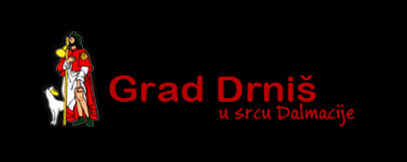https://tz-drnis.hr/index.php/en/visit/sacral-heritage#sigFreeIda71c3564a7
Church of St. Anthony
The building of the church of St. Anthony of Padua dates back to the Ottoman period, and was built in the mid-16th century. Originally, it was a mosque. Franciscans from Visovac at the end of XVII century converted it into the church of Our Lady of the Rosary, and it later became the Church of St. Anthony. Since then it has been upgraded and reconstructed several times, and in 1907 the presbytery was built. However, to this day the central part of the building has kept its original structure with a vault in the form of semi-domes covered with stone slabs. On the inner surface of the dome original ornaments from the Ottoman period made in the Moorish style have been preserved. Original windows, stone wreath and immured doors at the front of the church are also preserved. The church is a cultural monument and has been restored, along with the bell tower, after the Croatian Independence War.
Church of St. Roch
The church of St. Roch, patron saint of the town, was built in 1731. At that time the plague has decimated the local population and people of Drniš have, under the patronage of prominent ladies Franjica Theodosio and Angela Gili, built the church and dedicated it to St. Roch, protector from the plague. Besides to the altar of St. Rocco, in 1738 an altar dedicated to the Mother of Seven Sorrows was added, and in 1741 yet another altar. The church was completely restored in 2014. The Eucharistic celebration in it is held once a month (on the 16th). Every year the Feast of St. Roch, on 16th August, is celebrated also as the Day of Drniš. On the eve of the feast, as a religious preparation for the feast a Triduum (13th-15th August) is held in the church. The Triduum is preceded by the Musical Evenings in the church of St. Roch (10th–12th August). Numerous visitors and guests visit Drniš for this feast, partake at the mass and the traditional procession through the town, and in the final celebration organized in the town on the evening of the feast.
Parish Church of Our Lady of the Rosary
Parish church of Our Lady of the Rosary was built between 1871 and 1886 in a Neo-Romantic style, according to the ing. Emilis's sketches. This is a three naval building with semicircular apses. The facade is divided by stone pilasters which end in blind arcades. The main facade is accentuated by a portal and a rosette. The nave is illuminated by side windows and doors. The Parish church of Our Lady of the Rosary was sanctified in 1886. It was completely demolished during the Croatian Independence War (1991-1995). Apart from the visible damage on the facade, blind arches and a rosette above presbytery, in the interior the most damage was done to valuable organs, and Our Lady's statue and painting were found missing. The church organ was created 1897 by the renowned Slovenian workshop Zupan Brothers. Between sixteen organs in Croatia originating from this workshop, the largest one is precisely the organ in Drniš with its sixteen registers. After a long period of restoration, since 2009 one can again enjoy its unique sound during Mass and concerts.
www.gospa-od-ruzarija.hr
Church of St. John the Baptist
Church of St. John the Baptist in Badanj was until 1886 the parish church of Petrovo Field and Drniš. There is evidence that there was a church on this spot even in pre-Ottoman times (in 13th and 14th century), and it was built in Gothic style. At the beginning of the Croatian Independence War, this church was completely demolished. While clearing the ruins of the church and during floor excavations, approximately 30 architectural items in Gothic sacral building style were found. It is assumed that here was also an Early Christian church from 9th to 11th century. From 1996 – 1998, after the Croatian Independence War, using the same style and same foundations, a new church and a new stone bell tower were built. In the presbytery a big crucifix was placed.
www.gospa-od-ruzarija.hr
Dormition of the Holy Mother'S Church
Dormition of the Holy Mother is an Orthodox church built at the beginning of the 20th century, in Classicist style. It was built from stone ashlars in Byzantine type, according to sketches by architect Ćiril Metod Iveković. The church was sanctified in 1908.
St. Archangel Michael
This is an Orthodox church with cemetery, found on the exit from Drniš towards Split.
Franciscan Monastery of Our Lady of Mercy; Church of Our Lady of Visovac
On the island of Visovac on the Krka River there has been a Franciscan monastery of the Mother of Mercy since 1445. The monastery has an archeological collection, collection of ecclesiastical vestments and utensils, and valuable library. Church of Our Lady of Visovac is also located on the island.
www.visovac.hr
Minaret
Ottomans arrived to these parts in the 15th century, and ruled Drniš from 1522 to 1683. Their long-term influence in Drniš area resulted greatly on the town’s development and its population. Numerous written documents from that period describe Drniš as a town with 5 mosques and a sahat kula (oriental tower clock) in Drniš. These buildings were mostly destroyed as Venetians overtook the control of the area. Todays’ St. Anthony’s church was in fact built on the remains of a mosque, partly preserving original architecture and ornaments. The best preserved remain from Ottoman times is the Minaret made in the 16th century. This minaret is also the most west bound minaret built during Ottoman Empire. It is the only preserved minaret in Dalmatia, and the only one in Croatia deriving from this era.
















